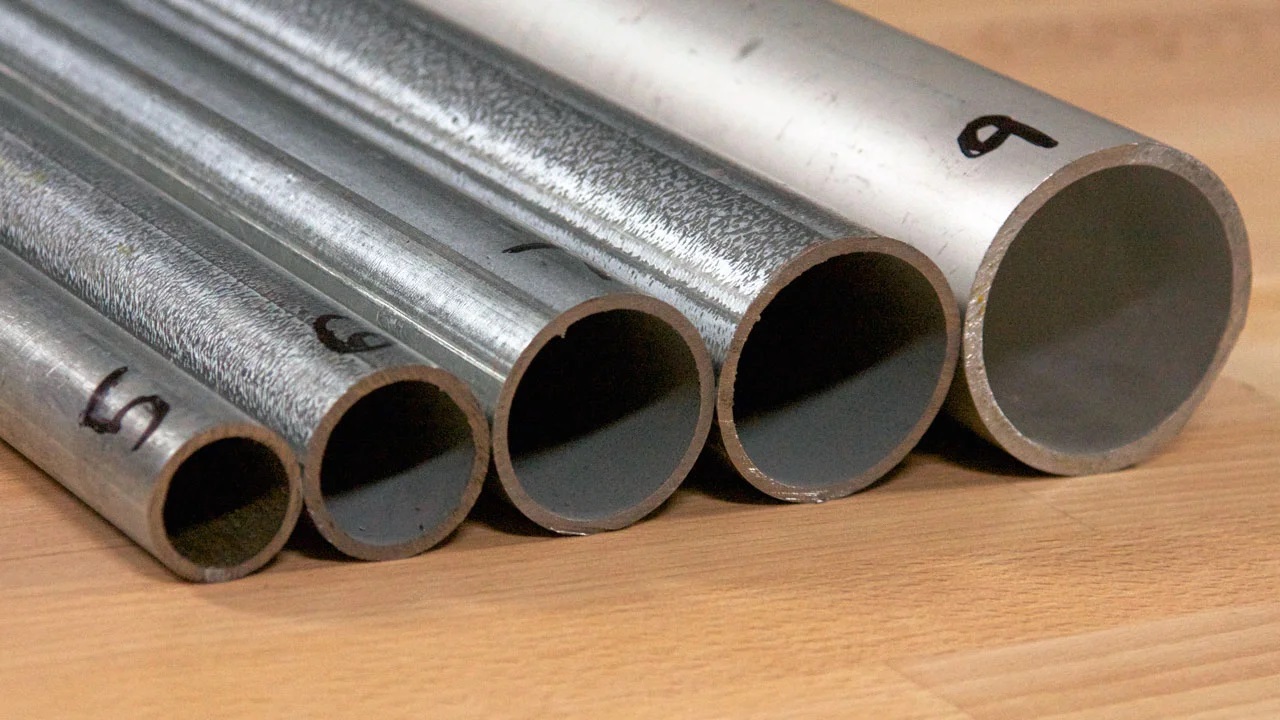Schedule 40 pipes function as the main selection for plumbing systems construction work and industrial facilities. The pipes demonstrate good pressure maintenance and durability characteristics that enable them to transport liquids and gases. Choosing the right pipe requires consideration of its thickness because it affects both strength and maximum pressure handling. The correct selection for different applications becomes possible through knowledge of schedule 40 Outside diameter [in inches] and millimeters.
What Is Schedule 40 Pipe Thickness?
Schedule 40 stands as a classification system that determines how thick a pipe becomes compared to its standard measurement. A standardized system exists to guarantee uniformity between materials from various manufacturers. Schedule 40 pipes increase their thickness proportionally to their diameter, which results in stronger structures with easy installation capabilities. The thickness measurements of Schedule 40 pipes depend on their nominal pipe size (NPS). The dimension of the pipe diameter determines whether it will have thin or thick walls. The specifications are provided in both inches and millimeters to support international standards.
Schedule 40 Pipe Thickness in Inches and Millimeters
Multiple wall sizes correspond to various dimensions found among Schedule 40 pipes. There are some examples of these pipes. The thickness of a wall of a 2-inch Schedule 40 pipe is 3.91 mm; it measures 0.154 inches. The thickness of a 4-inch Schedule 40 pipe is 0.237 inches, which also equals 6.02 mm. The biggest pipe of the group measures 12 inches in size and has 10.31 mm of wall dimensions using Schedule 40 standards. The thickness scales up with pipe diameter to give bigger pipes sufficient strength against internal pressure failure.
Why Does Pipe Thickness Matter?
The allowable usage of Schedule 40 pipes depends on wall thickness because this specification defines their technical applications. Increased pipe wall thickness provides better pressure resistance capabilities, making these pipes suitable for fluid distribution purposes under compression. Pipes used structurally become stronger when walls become thicker since the material then performs better at weight-bearing tasks and resists bending and cracking. The strength of scaffolding, as well as building frameworks and industrial equipment, depends heavily on this factor. The operational duration of corrosive industry facilities depends on how thick their pipes are. The longevity of a product depends on its thick pipe wall structure because it withstands mechanical damage better. Pipe thickness selection is also paramount in extreme temperature conditions. Pipes subject to high temperatures or freezing need to be thick enough not to expand, contract, or crack. Oil and gas, chemical processing, and power generation industries usually depend on thicker Schedule 40 pipes for efficiency and safety. In the case of pressurized steam, hot water systems, or underground pipes, thickness becomes an important parameter to ensure long-term reliability and avoid sudden failure.
Schedule 40 Pipe in Different Materials
Schedule 40 pipes exist in different materials that deliver unique properties and advantages based on the selected substance. The thickness measurements stay consistent across all materials, while the strength, together with weight, shows different characteristics.
- The industrial sector uses Steel Schedule 40 Pipes because they provide high durability and strength for their applications. The material appears in gas pipelines, structural frameworks, and mechanical systems.
- PVC Schedule 40 Pipes function in plumbing systems and irrigation systems because they have lightweight characteristics alongside durable properties and corrosion-resistant behavior.
- The reliable resistance of Stainless Steel Schedule 40 Pipes toward corrosion and chemical agents makes these pipes suitable for utilization in food processing facilities and medical equipment, together with maritime applications.
During project material selection, three essential aspects determine the outcome: the environment where materials will be exposed, the expected operating pressure, and the requirements for installation.
How to Select the Right Schedule 40 Pipe
The selection process for Schedule 40 pipe requires an evaluation of material choice and thickness and the intended application. Steel and stainless steel pipes with thicker walls should be selected when high-pressure resistance is necessary for a project. PVC pipes work well for drainage systems because they supply both cost efficiency and sufficient durability despite being non-pressurized. Engineers, together with contractors and project planners, benefit from knowing Schedule 40 pipe thickness measurements in both millimeters and inches for making better decisions. The correct selection process leads to applications with enhanced safety measures, operational efficiency, and extended reliability.
Conclusion
Many users select Schedule 40 pipes because they deliver strong construction features together with easy installation mechanics. Schedule 40 pipes possess different useful lifespans based on how their wall sizes compare to their specific dimension sizes. The combination of millimeter and inch measurements for pipe thickness enables a simple selection of appropriate products. Schedule 40 pipes serve as a dependable solution for numerous applications because they function effectively for plumbing needs and gas distribution systems as well as structural support frameworks.


